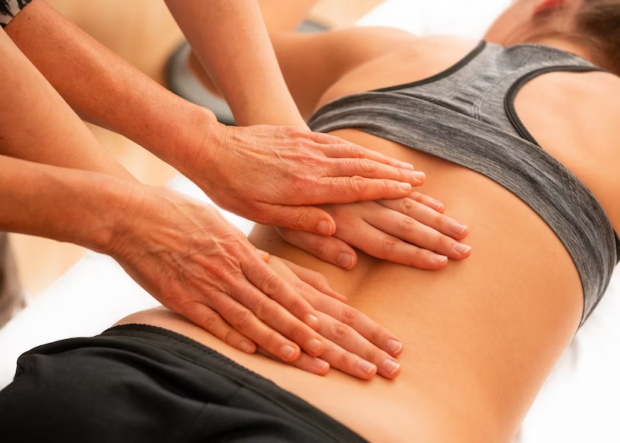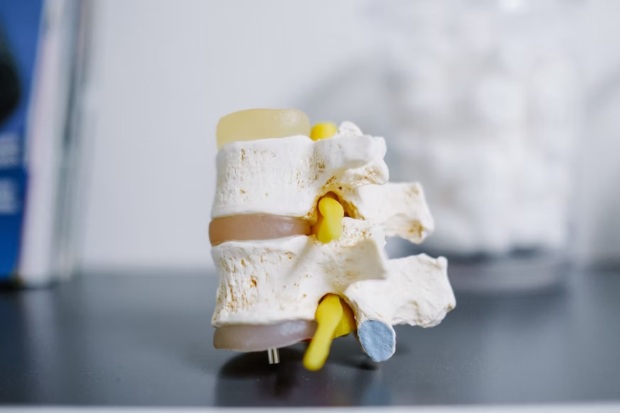Sacroiliac Joint Pain in Athletes: What Are the Treatment Options?
Sacroiliac joint pain is a common issue that affects many athletes, especially those who participate in high-impact sports. The sacroiliac (SI) joint is located at the base of the spine and helps to support the entire body while it moves. When this joint becomes damaged or inflamed, it can cause quite significant pain and even limit an athlete’s ability to perform at their best. So here are some of the causes and treatment options for sacroiliac joint pain in athletes.

Therapy Treatment
Physical therapy is an effective and non-invasive way to manage sacroiliac joint pain directly. A physical therapist will assess the athlete’s condition, determine the best range of motion and flexibility exercises, and guide how to move in a way that minimizes pain and improves overall stability. If you want more options, therapy for pelvic floor is also available because many athletes have extremely tight pelvic muscles which can put added pressure on the sacroiliac joint. This is a great option if you experience pain in other areas of the body, such as in your low back or hips, along with the sacroiliac joint.
Pain Medication
Sometimes physical therapy alone isn’t enough to alleviate Sacroiliac Joint Pain, and athletes may need to take medication for relief. Over-the-counter nonsteroidal anti-inflammatory drugs (NSAIDs) like ibuprofen are effective at relieving pain and reducing inflammation from SI joint-related injuries. If NSAIDs don’t provide sufficient relief, stronger prescription medications may be necessary. When taking medication for sacroiliac joint pain, it’s important to use them only as prescribed and to consult with your doctor about their potential side effects. Additionally, athletes should not rely solely on pain medications and should combine them with other treatments.
Cortisone Injections
If physical therapy and medication don’t provide relief, an athlete may consider cortisone injections to reduce inflammation in the sacroiliac joint and relieve pain. These injections are administered directly into the affected area and can provide temporary relief for up to several months at a time. It’s important to note that athletes should never use cortisone injections as their only treatment for SI joint pain because they can lead to further damage if not accompanied by rest, physical therapy, and other forms of rehabilitation. For example, a heavy-duty weight training program should not be performed while receiving cortisone injections.
Surgery
In extreme cases, surgery may be necessary to correct problems with the sacroiliac joint. This can involve fusing two bones or inserting screws and plates into the joint itself. Surgery is usually reserved as a last resort and will only be recommended if all other treatments have failed or are too risky to pursue. If an athlete needs surgery, they must follow their doctor’s instructions closely and participate in regular physical therapy afterward to ensure a successful recovery. Surgery for SI joint-related problems is the most expensive and invasive of all treatment options, so athletes should consider other treatments first.

Lifestyle Changes
Improving an athlete’s lifestyle can also help them deal with any sacroiliac joint pain. Eating a balanced diet, maintaining a healthy weight, and avoiding activities that cause too much strain on the SI joint are all important for managing pain. Additionally, athletes should make sure to get sufficient rest and incorporate stretching into their daily routine to reduce tension in the area. Some athletes may also find relief with yoga or tai chi, both of which increase flexibility and promote relaxation. For example, pelvic tilts can be used to alleviate pressure in the sacroiliac joint. By making these small lifestyle changes, athletes can often see drastic improvements in their condition over time.
Wearing a Sacroiliac Joint Brace
If an athlete’s SI joint pain persists despite other treatments, a sacroiliac joint brace may be necessary to provide additional support. These braces are designed to reduce stiffness and instability in the joint, which can make it easier for athletes to perform activities without further damage or discomfort. In addition to providing support, some of these braces also work to promote circulation and healing by applying gentle pressure on the affected area. They can also be used as part of a comprehensive rehabilitation program following surgery or injury. And with a variety of styles and sizes available, athletes can find one that best fits their needs.
Sacroiliac joint pain can be a serious and chronic problem for athletes. It’s important to address the issue as soon as possible to avoid further injury or long-term damage. By following the tips outlined above, athletes can reduce their discomfort, improve their performance, and get back to doing what they love faster. With the right treatment plan, SI joint pain need not slow down an athlete’s progress. Additionally, it’s always a good idea to consult with a doctor or physical therapist before beginning any new treatment.
